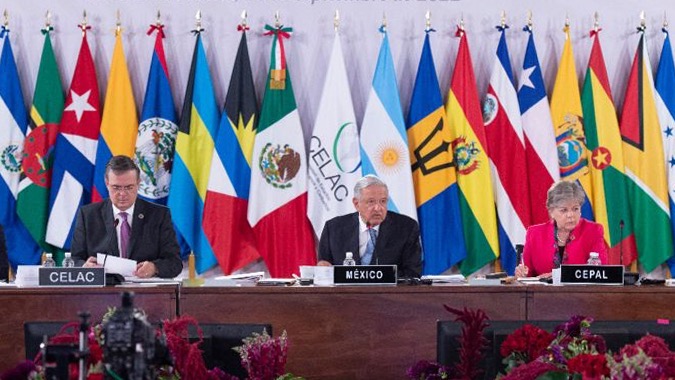Space Research and Satellite Technology in South America: A Framework for Regional Collaboration
This article analyzes the burgeoning field of space research and satellite technology in South America, examining its unique characteristics and the potential for enhanced regional and international collaboration. We will define key concepts such as remote sensing, geopolitical advantage, and technological diffusion to better understand the complexities of this rapidly evolving landscape. Remote sensing, in this context, refers to the acquisition of information about the Earth's surface and atmosphere using sensors mounted on satellites. Geopolitical advantage signifies the strategic benefits a nation gains from advanced technological capabilities, including space technology. Technological diffusion describes the spread of technological innovations across geographical boundaries and within societal structures.
1. Geographic Advantage and Technological Innovation: South America's diverse geography presents both challenges and opportunities for the application of satellite technology. The Amazon rainforest, Andes Mountains, and Patagonian steppe offer a unique natural laboratory for developing and testing advanced remote sensing capabilities. This testing ground allows for the validation and refinement of algorithms used in Earth observation, contributing to the development of more accurate and robust satellite-based monitoring systems. The application of the Resource-Based View (RBV) theory can explain the competitiveness gained by leveraging these unique geographical assets. RBV emphasizes how access to valuable resources, in this case, diverse geographical features, provides a competitive advantage.
2. Regional Cooperation and Institutional Frameworks: Recognizing the significant economic and scientific benefits of collaborative efforts, South American nations have established institutions such as the South American Space Agency (SAE) and the South American Association for Regional Cooperation in Space Activities (SARCSA). These initiatives facilitate knowledge sharing, joint research projects, and the coordination of satellite deployments, thus fostering economies of scale and reducing duplication of effort. The establishment of these institutions reflects the principles of institutional isomorphism, where organizations adopt similar structures and practices within the same field, in this case, space exploration, for increased legitimacy and resource acquisition.
3. Advancements in Satellite Technology and Applications: South American countries have made considerable strides in developing indigenous satellite technologies. Brazil’s Amazonia-1 satellite, dedicated to monitoring deforestation, exemplifies the region's commitment to using space technology for environmental management. These advancements leverage remote sensing techniques to gather data on deforestation, land degradation, and climate change. This data is crucial for informed decision-making, supporting the development of effective environmental policies and sustainable resource management practices, aligned with principles of environmental stewardship and sustainable development goals.
4. Disaster Management and Response: The real-time data provided by satellites is instrumental in disaster management. In a region prone to earthquakes, floods, and hurricanes, the rapid acquisition of satellite imagery allows for quick assessments of damage and the efficient allocation of resources. This demonstrates the practical application of spatial analysis and crisis management strategies, which are significantly enhanced by the availability of timely and accurate satellite data. The efficient use of resources adheres to principles of cost-effectiveness and resource optimization.
5. Bridging the Digital Divide and Enhancing Connectivity: Satellite technology plays a vital role in extending communication and internet access to remote and underserved communities across South America. This initiative tackles the digital divide by providing connectivity, promoting economic inclusion and facilitating access to education and healthcare information. This effort supports social equity and contributes to a more inclusive society by using satellite technology to overcome geographical barriers. This aligns with concepts of universal access and equitable distribution of resources.
6. Human Capital Development and Educational Initiatives: Investing in education and training programs for a skilled workforce is crucial for the long-term success of the space industry. The creation of specialized training programs and university collaborations enhances the technological capabilities of the region. This investment in human capital directly influences the successful application of human capital theory, suggesting a strong correlation between human capital investment and economic growth in the aerospace sector. These investments support the long-term sustainability of space-related industries.
7. Economic Growth and Foreign Investment Attraction: The space sector fosters economic growth by creating high-skilled jobs, attracting foreign investment, and stimulating innovation. This aligns with the principles of economic development that emphasizes diversification and value-added activities. The increased technological capacity acts as a catalyst for further economic diversification in several associated industries. A burgeoning aerospace sector attracts both domestic and international investment, stimulating economic growth.
8. International Collaboration and Knowledge Sharing: Collaboration with international partners enhances the region's capabilities. This exchange of knowledge and technology between South American countries and developed spacefaring nations strengthens the regional space program through the transfer of advanced technologies and expertise. This can be understood through the lens of network theory, emphasizing the synergistic effects of collaborative relationships.
9. Inspiring Future Generations and STEM Education: South America's advancements in space technology inspire youth to pursue careers in STEM fields. This is vital for creating a sustainable pipeline of skilled professionals who can drive future advancements and innovations in the space sector, highlighting the importance of fostering STEM education and creating role models for future generations.
Conclusions and Recommendations: South America's engagement in space research and satellite technology is poised for significant growth. By continuing to prioritize regional collaboration, invest in education, promote international partnerships, and leverage its unique geographical advantages, the region can establish itself as a major player in the global space sector. Future research should focus on quantifying the economic impact of space-related activities, analyzing the effectiveness of regional collaborative initiatives, and exploring opportunities for greater public-private partnerships to maximize the benefits of this critical sector. Further development of educational programs and scholarships focused on specialized aerospace technologies is also crucial for nurturing the next generation of space professionals. Furthermore, a thorough assessment of regulatory frameworks and international cooperation agreements is necessary to ensure the responsible and sustainable use of space resources.



